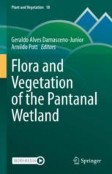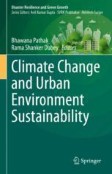Search
Search Results
-
Bayesian design methods for improving the effectiveness of ecosystem monitoring
Adaptive design methods can be used to make changes to survey designs in ecosystem monitoring to ensure that informative data are collected in an...

-
Monetary Value of the Ecosystem Services of the Pantanal and Its Surroundings: First Approximations and Perspectives
Although they occupy only 3% of the global surface area, wetlands represent 43.5% of the global monetary value provided by ecosystem services (ES)....
-
The Importance of Forest for Soil, Food, and Climate Security in Asia
Forests help in building soils through varying amounts of litter and root inputs. The forest decay adds essential nutrients to the soils which leads...
-
Brunt of Climate Change and Spice Crops: Scenario, Response, and Resilience
The brunt of climate change on plant animals and human beings is going to be exponential and millions of hectares of land and ecosystem are to...
-
Photosynthetic and gene expression analyses in Rhizophora mangle L. plants growing in field conditions provide insights into adaptation to high-salinity environments
Key messageRhizophora mangle plants tolerate high salinity under field conditions by increasing the transcription of genes involved in...

-
Composition and Structure of Benthal Algocenoses of a Large Eutrophic River: I. Taxonomic Characteristics and Dominant Species of Communities (Oka River, Russia)
AbstractThe species composition and taxonomic structure of the benthal algocenosis of the mouth of a large eutrophic–hypertrophic river in the period...

-
Impacts of Urbanization and Climate Change on Habitat Destruction and Emergence of Zoonotic Species
Urbanization and climate change are the two prime factors that affect the species habitat and serve as a significant threat to biodiversity. The loss...
-
The effect of future land use changes on hydrologic ecosystem services: a case study from the Zala catchment, Hungary
Maintaining and, where possible, improving the ecological status of our water resources are of particular importance for the future. So, one of the...

-
Fish community structure varies by location and presence of artificial islands: a case study in Hamilton Harbour, Lake Ontario
Artificial islands and reefs have been used in the Laurentian Great Lakes for over 40 years as a means of improving aquatic habitat; but research on...

-
Local ecological knowledge and wise use of ephemeral wetlands: the case of the Cowal system, Australia
Ephemeral wetlands are important ecologically but are often jurisdictionally complex and under-studied. Forms of local knowledge, including local...

-
De-embankments at the North Sea and the Baltic Sea Coasts
De-embankment may be a suitable management to mitigate damages of strong storm events on coastal habitats. This chapter provides an overview over...
-
Water Is Life: Importance and Management of Riparian Areas for Rangeland Wildlife
Water scarcity and climatic variability shape human settlement patterns and wildlife distribution and abundance on arid and semi-arid rangelands....
-
Orchestration of the Plant Microbiome for Enhanced Agriculture
The fast rising human population calls for new methods to enhance agricultural production because classical methods such as the excessive use of...
-
Genomic Designing Towards Development of Abiotic Stress Tolerant Grass Pea for Food and Nutritional Security
Grass pea (Lathyrus sativus L.) is a climate-resistant underused cool season legume crop grown in marginal rainy regions of sub-Saharan Africa, South...
-
Tree growth performance and xylem functional arrangements of Macrolobium Schreb. (Fabaceae) in different wetland forests in the Central Amazon basin
Key messageScarcity or excess water modulates the growth of Macrolobium spp. in different Amazonian wetlands. The trees developed different xylem...

-
Transitional Zones of Freshwater Ecosystems and Principles of the Zoning of the Mouth Areas of Tributaries of Reservoirs
The diversity of transition zones is considered, the main features of ecotones are indicated, and the degree of knowledge of the mouth areas of...

-
The role of stream restoration in enhancing ecosystem services
Striving for an integrated semi-natural stream-floodplain system as restoration target would optimally serve biodiversity and the provisioning of...

-
Invasive Plants of Great Salt Lake Wetlands: What, Where, When, How, and Why?
Great Salt Lake (GSL) and its wetlands are recognized around the world for the valuable habitat they provide for millions of migratory birds. GSL...
-
Role of Rhizobia in Plant Growth Promotion: Agriculture Prospective
Soil is one of the most important elements of the agricultural system, and it has been suffering severe damage for several decades. Losing soil...
-
Habitat Characteristics and Plant Community Dynamics Impact the Diversity, Composition, and Co-occurrence of Sediment Fungal Communities
Habitat edge effects can have profound impacts on biodiversity throughout terrestrial and aquatic biomes. Yet, few studies have examined how habitat...

